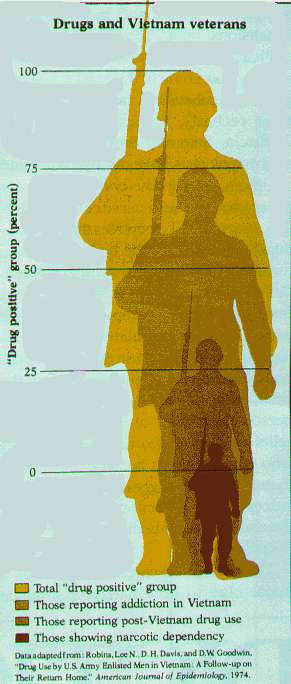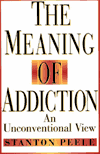Are you supporting a loved one with bipolar disorder? Learn what to do if that person is depressed, how to help a depressed person.
Supporting Someone with Bipolar - For Family and Friends
 The conventional wisdom, concerning depression, is that if you suspect someone is depressed and/or suicidal, you do everything in your power to get that person into therapy, under the care of a professional. This is very sound advice which I firmly support.
The conventional wisdom, concerning depression, is that if you suspect someone is depressed and/or suicidal, you do everything in your power to get that person into therapy, under the care of a professional. This is very sound advice which I firmly support.
But many of you have a family member or know someone you care about who is depressed, yet for a multitude of reasons is resistive of seeking professional help, or may have been in therapy and the therapy failed, or maybe the money ran out before the therapy was completed.
From the perspective of one who has been depressed, I will advise you on how to recognize depression, how to help a depressed person know that they are depressed, what to do, and what not do to concerning helping the depressed person, and possible options available to help the depressed person for whom the conventional system of help has failed.
- Learn all you can about depression
- Learn all you can about the helping system for depression in your area
- Bond with your friend
- Learn to communicate with the depressed person
- Encourage and help them to strengthen themselves physically, mentally, and emotionally as much as possible given their depressed state
- Help them explore options which will eventually get them the help they need and end their depression
Recognize the symptoms of depression
It is helpful to recognize, as an observer, which behaviors and comments indicate that your family member or friend might be depressed.
Behaviors
- Sudden loss of interest in personal hygiene
- Change to an alternative, uncharacteristic lifestyle
- Staying in bed for many hours a day
- Loss of energy, always tired, possible symptoms of physical pain
- Early waking, unable to get back to sleep
- Systematic alienating of friends and family members
- Uncharacteristic loss of interest and performance at school or at work
- Withdrawal from social contact and social functions
- Sudden weight gain or loss
- A compulsion to do something to the point of excess
- Procrastination of day-to-day tasks to the point of disrupting lifestyle
- Confusion - asking for advice when the answer seems apparent
- Forgetfulness concerning important dates, promises or commitments
Comments
Usually very negative, yet may be masked as inappropriate humor:
- "I am worthless"
- "There is no hope of change"
- "I never get a break"
- "My luck will never change"
- "God has deserted me"
- "My life will change if only..."
- "I think I am going crazy"
- "I feel so all alone"
- "No one cares or gives a damn about me"
Signs of Manic Behavior
- Being up one day and the next day being very down
- Beginning project after project without ever finishing or following through
- Planning get-rich schemes which have little or no chance of success
- Buying sprees, or purchasing unneeded items when there are bills to pay
- Beginning projects which are unrealistic because of lack of education or experience
- Blurting out inappropriate and ill-timed comments
- Being hyper, decreased need for sleep
- Changing mind rapidly as to opinion or support for someone or something
Signs of Suicidal Ideation
- Giving away possessions which have meaning or are valuable
- A sudden calm or focus in the midst of extreme problems or panic
- Talking about how lucky someone is who has died
- Comments on how bleak the future is and that there is no hope for change
- "I wish I had never been born"
- "They will be sorry when I am dead"
- A sudden refusal to communicate, or to act or react
Events which may cause suicidal ideation, given a history of depression, anxiety or panic disorder
- A history of suicidal behavior which friends and family members have become accustomed, but now there is a serious renewed life crisis or signs of panic
- A history of depression, and now there is a finalization of a long-sought-after event such as the graduation of children from school, the marriage of all children, the empty nest, or retirement from work
- Events which may be construed as the last straw or final blow in matters concerning marital status, vocational objectives, life-long dreams, financial objectives, being alone, or health problems
- Health problems, especially chronic problems which involve intense physical pain such as cancer or fibromyalgia
Few of the above events, behaviors or comments when witnessed alone are a sure indication that a person is depressed, manic, or having suicidal thoughts. But, more than a few, when witnessed, gives strong evidence that depression, or one of the other affective disorders, is present.
How the depressed mind works
The psychic pain of deep depression is real, it is not unlike the mental equivalent of having a root canal performed without benefit of a pain killer, this continues day after day. The pain is cumulative, ever-present and without end. It affects your very being, your essence, your soul, and you may embrace death to end that which seems to have no end in life.
The depressed fixate on a cause and on a cure. This is not always based on logic or reason, but on the desperate need to relieve the pain of depression. There is a certain comfort gained when we latch onto a cause of our depression. If we know the cause, then there must also be the possibility of a cure.
The possibility of a cure helps give us a glimmer of hope in the future, a prospect desperately needed by the depressed.
The depressed mind will gravitate towards that which affords immediate relief, without knowledge or awareness of that which would give lasting relief, that is, to end the depression.
At first, the depressed looks for a cure which is easy or instant in nature. Having failed to gain immediate relief, which in itself can worsen depression, we may latch onto any number of possible "cures."
The truth is that the conscious, depressed mind cannot, from within, determine either the cause or know the cure of depression. Depression is a chemical imbalance, the cause or trigger as yet unknown, which affects mood and emotions, over which the depressed has little or no control.
The need for immediate relief can become so strong that they may use physical pain in order to gain a small respite from the psychic pain of depression. Self-mutilation, mind numbing obsessive-compulsiveness, distortions of self-image and self-worth, over-eating, taking drugs or alcohol, and a host of other disorders may have in common one underlying cause, the conscious or unconscious attempt to end the psychic pain of depression.
The depressed want negative feedback. They seek, remember, and rationalize the negative and forget or discount the positive.
If forced upon them, the positive will anger and/or hurt the depressed. They have evidence to the contrary, as the positive has left their life and they see no prospect of it ever returning. They may feel as though God has deserted them and that God does not answer their prayers.
The depressed think that their problems and pain are unique. They feel that they are all alone, and many times when first becoming depressed, the symptoms of depression make them feel as though they are going crazy. They can feel all alone in the midst of a supportive congregation at church, or in the midst of a loving family.
Important! Your commitment to help a depressed person is an awesome responsibility. It is frustrating, emotionally draining, and must not be taken lightly. You should commit for the long term.
Do not try to become their therapist. Instead, support, encourage, and most importantly, be there. Your job is not to help them become more comfortable with their depression, but to help them end their depression.
Your "job" doesn't end when the depressed person seeks therapy. Don't abandon them as soon as therapy starts. It is natural to become very relieved when, finally, your friend or family member seeks therapy, and the tendency is to back off and let the professional do their job. It may be weeks before the medications and/or talking therapies begin to start helping the depressed person. During this period, it is not uncommon for the depressed person to become discouraged and not take their medications or to abandon their therapist. This is especially true if they now feel abandoned by their former support system. Encourage them to take their medications, encourage them to hang in there until the therapy begins to take hold.
Because of your past relationship, you are the best person to assess their progress, or lack of progress, or possible worsening situation. The professional community now says that of the people who seek help for depression, 80% will find some relief. But what of the other 20 percent? That still represents millions of people. What if your friend or family member is one of the 20 percent? They will need your help now, more than ever.
Help them recognize that they are depressed, and that DEPRESSION is the problem. Talk about their symptoms, their feelings, and what is going on in their mind. It's OK (if they allow it) to talk about their confusion, forgetfulness, suicidal thoughts, procrastination, social withdrawal, physical pain, loneliness, lack of self-esteem and worth, etc. Don't be judgmental or overly directive, listen and care. Help them to realize that although this is very personal and painful, they are not alone - you are there for them and most of their symptoms are shared by other depressed people.
Most depressed people want to talk about their life problems; the oppressive boss, the divorce, the financial problems, vocational problems, health problems, loss of a loved one, etc. They many times feel that if they can only solve their life problems, the symptoms and pain will stop. While this may be true in some cases, it is seldom possible to solve all of life's problems and there are certain problems which are, at this time, unsolvable, such as the loss of a loved one or memories of abuse. Keep in mind that it is their emotional reaction to life's problems which has much to do with the depressive response. Other people have life problems similar to theirs, yet do not become depressed.
A strong word of caution about that last statement! There are certain comments which should not be said to a depressed person, that last statement being one of them. It implies that they are weaker than other people and that somehow this depression is their fault. This is not true! Although depressed people concentrate on life's problems, it is your task to show them that the most pressing problem in their life, at this time, is the depression itself. Once depression is lifted, life's problems can be worked on from a position of strength, rather than from a state of depression.
Depression is a natural response to some of life's crises such as the loss of a loved one, divorce, financial ruin, etc. This situational depression usually runs its course and the people are able to get on with their life after a reasonable amount of time passes. But for some, this natural depression lingers or worsens into a condition which is called clinical depression (a depression which is so disruptive that it must be treated by therapy). The reason a natural depression becomes a clinical depression is not always clear. It may happen when a genetic propensity to depress is triggered by stress and many times is seen in families with a history of depression. If you witness signs of a sudden worsening of depression or suicidal ideation after a life crisis, do not assume this is natural. Encourage them to seek therapy.
Sympathy vs. Empathy vs. Tough Love
Sympathy for the depressed person is many times expressed as how you feel about their situation. "I am sorry that you are in this mess, and I wish I could do something to help you." Sympathy might be briefly expressed, but don't dwell on it, as the emphasis is on you and your feelings.
Empathy, on the other hand, is to express the desire to know more about how they feel. In order to genuinely show empathy for the depressed person, you must LISTEN to what they have to say and what they are feeling, without being judgmental or overly directive.
I adhere to the basic concept of Tough Love, where you express your genuine regard for a person by encouraging them to take charge of their life and solve their own problems. But, when dealing with a depressed person, this approach will most times backfire and will alienate your friend, possibly causing further depression.
Logic vs. Emotion. How does your mind react to the depressed person?
It might be very clear in your mind what causes the problems in the depressed person's life, and you can clearly see what should be done to correct those problems. The temptation to help them recognize the error in their thinking and their actions is strong. But, if you want to continue the relationship, you must refrain from these temptations.
You might feel as though the depressed person is wrong, weak, stupid, or overly and irrationally emotional. But the brain chemistry of the depressed person has changed, with decreased levels of the neurotransmitter serotonin in the frontal cortex of the brain, resulting in a changed mood and different emotional response than they would have experienced before becoming depressed. Therefore, the depressed person's logic and resultant conclusions are not irrational, but are based on the very real feedback they receive from their emotions, as changed by an altered brain chemistry. You can use your logical explanations and arguments, attempting to help the depressed person see the error in their thinking until you are frustrated and possibly angered, all to no avail.
From the above it is evident that there are certain comments which, although your logic and your emotion tell you will bring about positive change, are actually hurtful and may further depress the person you are trying to help.
The chance that you say the wrong thing to a depressed person usually stems from the fact that you are reacting to your own emotions and not understanding or paying enough attention to the needs of the depressed person.
Take care of your own mental health
It is not uncommon for a person who has been depressed and is now doing much better, to become motivated in helping other people presently suffering the pain of depression. If this describes your situation, be careful that you are strong enough to commit for the long haul. Your contact with a depressed person may bring to the fore issues and emotions which you have not yet sufficiently cleared, and although this may ultimately be therapeutic for you, it may be harmful to the person you are trying help.
You cannot help another person if you do not remain healthy yourself, both physically and mentally. You will need diversions and time away from the helping situation, do something for yourself, something which helps you refresh and relax. Remember that depression is difficult to recognize in oneself, and it may be that you are not exempt!
The importance of physical health, diet, and nutrition
As I previously stated the depressed tend to fixate on a cause and a cure of their depression. It might be that the exact cause cannot be determined and for some the cure may be just as illusive. Therefore I believe it is extremely beneficial for a depressed person to begin a regimentation of complete physical and mental health. Any one thing a depressed person does may not be viewed as a cure, but taken as a whole an improved physical and mental health state, at the least, will improve the chances of overcoming depression.
Of course the amount of physical exercise and what one does to improve their mental health is relative to how depressed they are and their overall general health when first they start. It may be that a simple walk once a week is the most the person is able to muster, but if this is more then they were doing before, it will be beneficial. How much physical exercise a person does is not as important as it is that they do more than they would normally do on a day to day basis. As their strength improves the amount of physical exertion can be increased.
I place depressed people in two general categories when advising about diet and nutrition. That is, those who tend toward excess and those who are deficient, concerning diet and nutrition.
Of course the compulsive overeater is in the first category and this will also include those who are addicted to a specific food or food group such as hot and spicy, the "it ain't a meal without meat" people, sweets only, and the stick-to-your-ribs gravy and sauce types. Evidence of these excesses are many times witnessed by a generalized glutted feeling, weight gain, heartburn, and possible colon problems. Although some in this group may imbibe huge amounts of empty calories and become deficient in needed nutrients, for the most part these excesses tend to, over time, cause a build up of toxicity in the individual cells, the liver, and a possible build up of toxic substances in the colon. The relationship of this toxicity to depression is neither fully investigated or understood.
I find that a general cleansing of my body from time to time, to be extremely beneficial in combating depression. Methods to cleanse the body (and brain) of toxins might include, aerobic exercise, sweat-it-out steam or hot water therapies, colon and toxin cleansing herbal treatments, juice or water fasts, increased fiber intake, eating more vegetables and fruits, and drinking more water. I place myself in this first group, where it is not as important what I am deficient in concerning nutrients, as it is important that I try to not imbibe toxins and that I cleanse myself of toxins from time to time.
Caution! Care and restraint must be exercised regarding cleansing the body of toxins. It is possible to place an over emphasis on these procedures and begin to binge and purge in order to exercise control over emotions and body functions. If it gets this far, what in fact has happened is that the depressed person has indeed lost control in their attempt to exercise control.
The second group, those who are deficient in needed nutrients because of a poor metabolism or the restriction of food intake, need concern themselves that they eat enough calories and get needed nutrients. Any exercise would not be as aerobic in nature, but concentrate on strength and endurance.
Most notable of the second group are those suffering from anorexia and bulimia. Although some in this group may need to cleanse themselves of toxins, ( say someone who smokes, and imbibes nothing but caffeine laced drinks and sweets) any attempt to cleanse the body should be done only under the direction of a medical doctor!
The adverse effects of additions: smoking, drugs and alcohol
Cause and Effect: Does the over use or addiction to smoking, drugs, or alcohol cause depression or is it that depression causes one to over smoke, take drugs, and/or abuse alcohol? The answer may well be that it isn't possible to determine cause and effect in many cases, but what is important is that smoking, drugs and alcohol all cause adverse effects on both physical and mental health. I believe that in most cases it is possible to separate the problems and work on the depression independent of the addiction. If the depression is improved then the addiction can be worked on from a position of non-depressed strength rather than from a state of depression. This approach may not be possible in the advanced stages of depression or addiction, when the afflicted approach a point where they begin to lose their free will.
For many years smoking has not been placed in this category as the effects of smoking are cumulative and not as immediately apparent as drugs or alcohol are, but the evidence is piling up that there is a direct link to smoking and a host of health problems, including depression!
Failure of therapy
Your friend may have been to therapy, but for some reason has not found satisfactory relief of their depression. The failure of therapy in no way means it is their fault or that therapy will not eventually work for them. In most cases, what is at fault is the vast number of problems inherent in the mental health system and/or their particular therapist. The problems facing the mental health system are far too numerous and complex to address here, but let me list a few things you should be aware of which may cause problems for your friend.
- General practitioners (medical doctors) prescribing antidepressant drugs without a proper diagnosis of the type of depression present. A patient with undiagnosed bipolar depression who is given an antidepressant alone, may become dangerously manic within a short period of time.
- A therapist using simplistic methods such as tranquilizers, relaxing exercises, mediation, or the death fantasy, when the depression is far to severe for these methods to be of lasting benefit. Your friend may be impressed with the short term relief they receive from these methods. But, except for the few cases where the therapist gets lucky (and of course the patient), these methods do not incorporate a plan for the end of depression and most times ultimately there is more harm done than good.
- Drugs only, being used to the exclusion of a cognitive based talking therapy. If the environmental, interpersonal, and cognitive component of depression is ignored and the drugs do not work, the patient is basically left to their own resources. They may be relegated to a position where they are continually waiting for that next 'miracle drug' to be invented which will finally relieve them of their depression, rather than working on their coping skills, interpersonal relationships and cognitive input, which may just cure their depression without the use of drugs.
- Their first therapeutic encounter may have been unsuccessful as a result of an ineffectual therapy or possibly the therapist was inept. This is where you as the helper may be able to do the most good. Do your homework! Your depressed friend does not have the energy or cognitive strength at this time to thoroughly investigate the resources available in your area. You do the work!
- It is possible that your depressed friend has let their depressed mind dictate the methodology of the cure of their depression. The depressed mind does not give us good counsel and does not know of the cause or the cure of depression, although your depressed friend may take issue with this fact. Help them to know and understand that the symptoms, mood changes, and emotional feelings of depression makes the cure seem foreign to their depressed mind. Their resistance to therapy and misdirected sense of cure are as much a symptom of depression as is their changed emotional state.
Things you can do to help
I think that the most advantageous thing you can do to help your depressed friend or family member, is to take a walk with them. This may seem overly simplistic, but let me explain. It may be that there is no better way to bond with a person then to simply walk beside them. There is a common rhythm or cadence set when you walk with someone which fosters a synchronization of mind and of mood. If a depressed person is at odds with their environment, their interpersonal relationships are strained, and they have a decreased sex drive, this harmonious link during your walk may be the only real connection they have made with another human being in quite some time. This is something which does not have to be verbalized or acknowledged, it just happens.
A break or lapse in conversation during a walk is not as awkward as it might be in other situations as you are still doing something (walking) and what you pass by might be of interest or a possible topic of conversation.
Your friend might be totally lacking in any type of physical exercise and this walk could be the start of their becoming more active.
If your depressed friend has been a shut-in, no longer engaging in any social activity, this walk may be a non threatening way to slowly begin social interaction once again.
I recommend that the walk become a regular event and could be scheduled once, twice or three times a week. This regimentation of schedule will be beneficial and will help when procrastination is a problem.
It may be that these walks become the only enjoyable thing in your depressed friends life. It is paramount that you take this obligation seriously and that if you cannot make it to a scheduled walk you must call ahead of time, explain the situation and confirm the time of the next walk. Like I said, you should be in this for the long haul, you don't want to do more harm than good.
A walk is a walk, is just a walk - or is it? One wonders what would happen if therapists took a walk with their clients instead of interacting while in a chair or on a couch?
Your friend may be unwilling or unable to walk with you on a regular basis. There are other ways to connect with another human being.
The depressed have problems initiating and maintaining eye contact with others, make sure you do not initiate eye contact while making a strong point in the conversation as it might be viewed as confrontational, hostile, or even demeaning. Attempts to initiate eye contact should be made when you are showing that you understand and care about what they are going through.
A place where you are both comfortable should be chosen when you cannot walk, possibly a coffee shop or family room, as long as there are not too many distractions. Music that you both enjoy can be listened to as a means to foster a synchronization of mind and of mood that I talked about in the walking section previously.
A hug, if appropriate, will help you bond. The hug should be comfortable for both of you, not strained or forced. Do not pat them on the back or say anything until maybe the very last. Don't look away after the hug (as if to apologize for having done it).
To show empathy for another person is to place yourself in their situation. You cannot know what they are feeling or experiencing unless you genuinely listen to them without being judgmental or overly directive. Although their emotions and feelings might seem foreign to you, for them these feelings are real and can be justified given their experiences and the emotions caused by the depression.
It will sometimes be difficult to convince your friend that you should help them with tasks procrastinated. There may be bills past due, yard work left undone, or laundry that needs washing. Your approach when trying to help your depressed friend with things procrastinated is very important, as the emotions of guilt, anger or pride may be closely associated with that which is left undone. If you do something for them without first discussing it with them, the negative reaction may surprise and even hurt you!
Have a frank discussion of what needs to be done, possible underlying reasons why things remain undone, and what you might do to help them.
Gentle reminders of upcoming events or commitments will be helpful if you take care not to badger or nag them into doing something.
What do you talk about?
The depressed person will most times want to talk about their life problems. They may want you to confirm their negative view of life, and at the same time can be very manipulative, needy, and demanding. There is much time and effort exerted trying to solve their problems and when they become exhausted and realize that there is no solution they become further depressed. It will be very easy for you to be sucked into this spiral of emotions to the benefit of neither you nor your depressed friend. Their problems might be horrendous and unsolvable at this time, but for now the most pressing problem in their life is the depression, this is especially true if they are having suicidal thoughts.
What is considered a normal dialogue and discourse with a depressed person may not be possible, at this time. A free exchange of opinions and ideas will end with you trying to direct them into doing what you feel is best for them and your trying to help them be more positive about their situation and their life. They will end by either withdrawing or angering, either way they will further depress and you will not have helped them toward ending their depression.
Your feelings and opinions are not what is at issue at this time and you may have to bite your tongue. If you are overly directive, overly opinionated, manipulative, or patronizing you will lose control of the conversation. The only control you will have is by carefully choosing what questions you ask of them. You cannot control their answers and you may not like or agree with their answers. But their feelings are valid and their emotions are real, given their depressed state.
Keep in mind that you are not trying to provide solutions to their life problems and you are not trying cure their depression. What you are attempting to accomplish is to help them explore other opinions and options as to the cause and the cure of their depression.
If they are new to depression, try for an open and frank discussion about their feelings, discuss the symptoms which have lead you to believe that they are depressed and may need help. Talk about their view of the cause of, and the cure to, their problems and/or depression. If they have fixed on either a cause or on a cure which you think may be causing them further problems, help them to explore alternative reasons and solutions. Encourage them to start therapy, or at least get a professional diagnoses of what may be causing these changed emotions and other symptoms. There is an 80% chance that if they enter the system of help available for depressed people, there will be significant improvement. Those are excellent odds and well worth a try.
If they are not new to depression, but for some reason therapy has failed or therapy is no longer available to them, help them to explore other options which may yet allow them to end the pain of depression.
- If they have been on a drug only therapy and depression continues, is it possible that the addition of a cognitive-based talking therapy might be helpful, or maybe they could start a cognitive-based self-help program?
- If a self-help program is being used, is it based on helping them end depression, or is it based on short-term relief?
- Help them explore what part their actions, thoughts and opinions have to do with their therapy failing. Do those actions, thoughts and opinions have much to do with their perpetuating their own depression?
- Is it possible that many of their problems and the resultant depressed is caused by learned behavior and attitudes emulated from growing up with a depressed parent or sibling?
- Have they been abused by adults or possibly mistreated by peers as they were growing up? How much does this abuse or mistreatment effect their present behavior and thought process? Does their present reaction to this past abuse put them at odds with other people and their environment, causing the depressive response?
Be careful not to delve too deep into these issues. They are best left to a competent therapist to investigate.
Helping the depressed family member
It may be very difficult to bond with a family member in the depressed person/helper relationship. This is especially true if the depression has caused stress between a parent/teenager or husband/wife. If you cannot bond in the depressed person/helper relationship because of past negative baggage, it might become necessary to enlist the help of a third party such as a priest, therapist, school counselor or trusted mutual friend.
If the depressed person refuses to admit that they are depressed or they are resistive to any type of therapy, then I suggest that you try and use my articles in place of third party help. -The first article 'Depression: Understanding Suicidal Thoughts' is a non threatening explanation of some of the triggers which intensify the suicidal urge. Most depressed people identify with at least some of what I present. Subsequent articles try and connect with the depressed person in order to convince them that they are depressed and that therapy will benefit them. Of course the challenge you face is to convince them that they should read the articles and that they might find help on these pages. This will not be an easy task.
You are at risk of becoming depressed yourself. If your life is being destroyed by their depression, or if someone may be harmed, it may be necessary to ask for help from the appropriate authorities or agencies, in order to help your depressed family member (and help yourself). Forced intervention will be traumatic for you and the depressed person will view it as a betrayal, but if needed therapy is received it is best for all concerned. The relationship has a better chance of being mended after the depression is lifted.
Becoming over dependent on the helper
CAUTION! It is very possible that your depressed friend will begin to deem you and your help as the cure to their problems and their depression, to the exclusion of all other possible help. You are not trained to accurately diagnose their problem and their over dependence on you will sooner or later place you in a situation that you cannot handle.
It must be made clear that you do not possess the answers, you are only there to support them and help them find the answers.
Your efforts must be directed toward helping them find the appropriate therapy and ultimately becoming self reliant, dependent on neither you nor their therapist.
Conclusion
The reason that depression is so prevalent and also many times so very difficult to cure is that it is not readily apparent from witnessing or experiencing the symptoms and mood change of the depressed person, as to either the cause or the possible cure of that depressed state. The conscious mind and the biological unconscious mind cannot directly communicate, therefore the conscious mind must assume the cause based on automatic responses of the unconscious mind as formulated from past environmental and cognitive input. The conscious mind is further misdirected by the altered mood and emotions caused by the depressive response. (A changed brain chemistry)
The cure is just as illusive, as what gives relief to the conscious mind, does not necessarily cause the unconscious mind to reverse the depressive response, and in fact may reinforce that response. What must happen then, is that the conscious mind does and thinks those things which will cause the unconscious mind to reverse the depressive response. Also, what must be done and thought will most times be counter to what the depressed emotions dictate. That is why when things get out of control, most of us will need the advice and counsel of a competent and caring therapist.
next: How Caregivers Can Help with Medication Compliance
~ bipolar disorder library
~ all bipolar disorder articles



 Many years ago, when I was a young adolescent, an adult in my life said that she dreamed about a great chasm, a chasm so deep that she couldn't see to the bottom of it, with sheer rock cliffs on either side. She was alone on one side of the chasm, looking to the other side. On that other side, people were talking to one another, laughing and appearing to have a good time. She felt totally excluded and felt that there was no way to get to the other side of the chasm.
Many years ago, when I was a young adolescent, an adult in my life said that she dreamed about a great chasm, a chasm so deep that she couldn't see to the bottom of it, with sheer rock cliffs on either side. She was alone on one side of the chasm, looking to the other side. On that other side, people were talking to one another, laughing and appearing to have a good time. She felt totally excluded and felt that there was no way to get to the other side of the chasm. If you live where winter means snow, ice and mud, you may have avoided exercising, or may have been promising yourself that when spring comes, you will exercise regularly. Now is the time to begin! With spring right around the corner, you can't afford to put it off any longer. And if you live where winter is just beginning, exercise will help keep you well through this dark season.
If you live where winter means snow, ice and mud, you may have avoided exercising, or may have been promising yourself that when spring comes, you will exercise regularly. Now is the time to begin! With spring right around the corner, you can't afford to put it off any longer. And if you live where winter is just beginning, exercise will help keep you well through this dark season. 

 The conventional wisdom, concerning depression, is that if you suspect someone is depressed and/or suicidal, you do everything in your power to get that person into therapy, under the care of a professional. This is very sound advice which I firmly support.
The conventional wisdom, concerning depression, is that if you suspect someone is depressed and/or suicidal, you do everything in your power to get that person into therapy, under the care of a professional. This is very sound advice which I firmly support. The Meaning of Addiction presents an entire non-reductive, experiential model of addiction. It became a major nondisease text, including use at Harvard. Dr. Margaret Bean-Bayog (who surrendered her medical license in a case involving the suicide of a patient who had in his possession sado-masochistic sexual fantasies Bean-Bayog had written) said the book "worried" her in a review in the New England Journal of Medicine and asked for people who felt the same way to contact her.
The Meaning of Addiction presents an entire non-reductive, experiential model of addiction. It became a major nondisease text, including use at Harvard. Dr. Margaret Bean-Bayog (who surrendered her medical license in a case involving the suicide of a patient who had in his possession sado-masochistic sexual fantasies Bean-Bayog had written) said the book "worried" her in a review in the New England Journal of Medicine and asked for people who felt the same way to contact her.